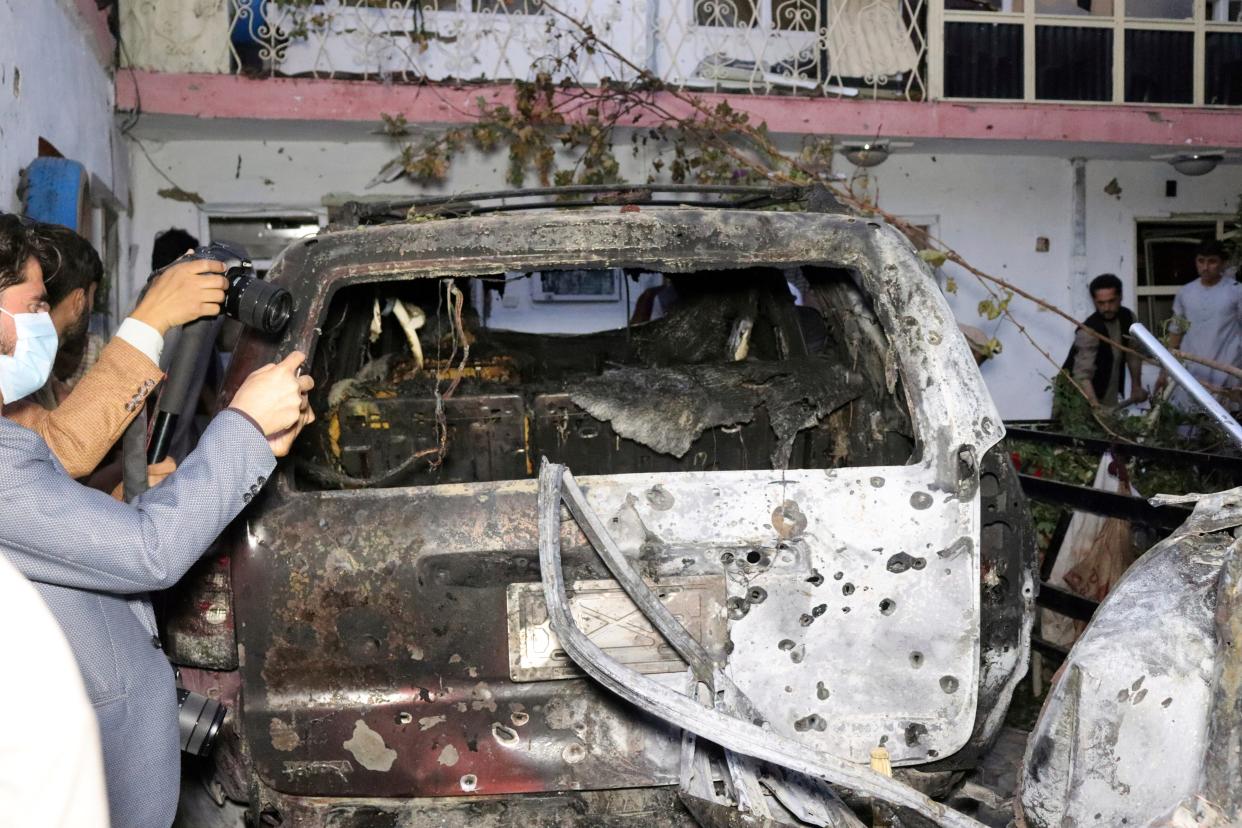Did the US use new ‘ninja bomb’ with blades instead of explosives to take out Isis-K militants?

The US military reportedly deployed a brutal new weapon in its strike against the Islamic State in Afghanistan on Saturday in retaliation for the suicide bombing of Hamid Karzai International Airport in Kabul on Thursday.
The attack - claimed by Isis-Khorasan Province (Isis-K), the Islamist terror faction’s regional affiliate - left almost 200 Afghan civilians dead as they attempted to board evacuation flights to flee the incoming Taliban, as well as 13 American servicemen and women.
According to The Wall Street Journal, the Pentagon hit back over the weekend by assassinating two Isis “planners” behind the atrocity and injuring a third using a Hellfire R9X, a laser-guided air-to-surface missile fired from a Reaper drone arriving from the Persian Gulf.
The weapon, conceived during the Barack Obama-era to reduce collateral damage, does not contain an explosive warhead, instead releasing six razor-sharp, sword-length blades prior to impact to ensure maximum damage to the target without posing the same degree of threat to bystanders.
The device is said to be capable of chewing through the roof of a car like a tin opener.
The R9X weighs 49kg and is known formally as AGM-114R9X and colloquially as the “ninja bomb” or “the flying Ginsu”, an ironic nod to a popular range of kitchen knives sold in kitsch 1970s TV infomercials.
The US military has made almost no public statements about the weapon to date and has declined to name the two Isis men who died in the airstrike.
But a study by investigative journalism site Bellingcat reports that the R9X has been used at least 11 times since 2017, in Afghanistan as well as in Syria, Libya, Somalia and Yemen.
The device’s deployment was reported as fact by The WSJ and by The Daily Telegraph but two Bellingcat analysts have since taken to Twitter to question their certainty, noting that the crater left behind and visible in a video accompanying the former’s story does not resemble those seen in previous strikes involving the same missile.
Not sure what's going on with the pit/crater in the foreground in the beginning of the WSJ video, but if it _was_ from the strike, then that also doesn't line up with past R9X strikes, which leave very small craters if any (suppose it could depend on the surface, though). pic.twitter.com/JCcXOReVON
— Jake Godin (@JakeGodin) August 28, 2021
The vehicle in the courtyard has clearly been exposed to significant heat. The R9X is very unlikely to do this because it doesn’t explode.
In theory it could hit a fuel tank and cause this kind of damage, but the vehicle itself has no tell-tale cuts from the swords. pic.twitter.com/odguVj1qF5— Nick Waters (@N_Waters89) August 29, 2021
“The vehicle in the courtyard has clearly been exposed to significant heat. The R9X is very unlikely to do this because it doesn’t explode,” observed Bellingcat senior investigator Nick Waters.
“In theory it could hit a fuel tank and cause this kind of damage, but the vehicle itself has no tell-tale cuts from the swords.”
Human Rights Watch has previously warned that the new device should not be regarded as a “fail safe” or considered the answer to the ethical problems associated with the use of drone strikes in modern warfare.
“The new technology can only be as good as the intelligence and the rules that guide it,” Letta Tayler, the organisation’s associate director, wrote when reports of the missile first circulated in 2019.
“On its own, the R9X won’t resolve the host of legal issues surrounding the US targeted killing programme, which since 2002 has killed thousands of people with scant transparency.”
Read More
Afghanistan news live: UK into ‘final hours’ of evacuation mission

